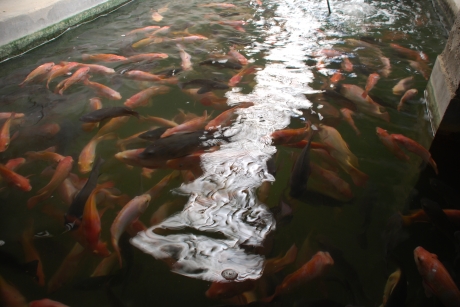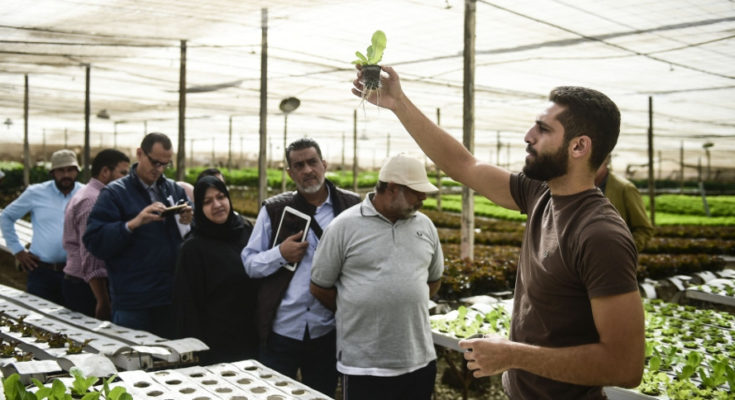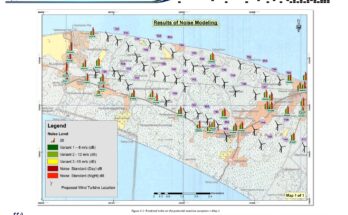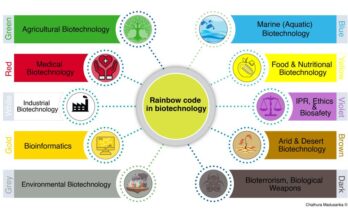Water is fast becoming a scare resource even in countries like Sri Lanka where we had the luxury of enough fresh water for our agricultural uses and our day to day uses. But with the changing climate pattern and fast tracked development process the water is fast becoming a scare resource. To effectively tackle this problem the world have come up with different solutions. Aquaponics is one such alternative through which water and other resources are used in a much more effective manner.
The word aquaponics derives from the two words “Aquaculture” – growing of fish in enclosed environment and “Hydroponics” – growing plants in soil-less environment. So Aquaponics is the cultivation of plants and aquatic animals in a recirculating environment.
The farming systems like aquaponics are called Integrated Aquaculture Agriculture (IAA). Systems like this can reduce water consumption by 90% compared to traditional agriculture. This is very good news for the agriculture sector, which worldwide, uses about 70% of available freshwater.
WHY DO AQUAPONICS?

Aquaponics is a recirculating food production system that uses less than 10% of the water normally required for fish farming and plant production. It is therefore suitable for small-scale/domestic consumption as well as commercial fresh food production, particularly in communities where water is scarce. There is very little water loss, mainly due to evaporation and plant transpiration, there is also no need for plant chemicals, which would cause the fish to die, however some organic means of plant protection maybe required particularly if you are growing monoculture.
One of the main advantages of using aquaponics is that it is an excellent way of producing protein foods such as fish and vegetables in both impoverished areas (to support food security), as well as in areas where there is a high demand for good quality produce. High-priced organic produce can be produced for urban markets, for instance. Aquaponics systems conserve water and plants growing in these systems grow quicker, larger and with a higher yield (15%)1 than those growing in a regular hydroponics system. Some say they even taste better!
The plants do not rely on water replenishments and by constantly using recycled water, it means that systems can be located almost anywhere including in close proximity to markets. From a business perspective this has the advantage of reducing distribution costs and lowering the carbon footprint of the enterprise. Also, the need for inputs is low once the system has been set-up, just some simple systems’ maintenance along with fish, fish feed, seeds (or seedlings) and water to replenish the unit. Virtually no chemical fertilizers are needed for the plants, and all the nutrients the plants need come from the fish waste.

HOW DOES AQUAPONICS WORK?
Aquaponics is the integration of aquaculture and hydroponics in one production system. This method relies on fish waste to be used as an organic nutrient solution to grow vegetables. In a system, water flows from the fish tank into a biofilter where bacteria break down the fish waste into an organic nutrient solution for the growing vegetables. The plants then absorb the nutrients from the water which essentially cleans it before being re-circulated back into the fish tanks.
The bacteria are fundamental to this process. They convert the ammonia, which is a major component of fish waste, into nitrate (a more accessible form of nitrogen for plants), preventing the water from becoming toxic to the fish (this conversion of ammonia to nitrate is known as the nitrification process). It is vital that every aquaponics unit has a biological filtration component to house the bacteria, allowing them to constantly convert the ammonia into nitrate.
Aquaponics units come in all shapes and sizes from small devices sitting on kitchen benches using goldfish and growing herbs, to larger systems growing silver perch or tilapia with tomatoes, zucchini, lettuce, etc. and even more complex units producing tonnes of fish and thousands of plants per month ideal for commercial scale production.
THE SRI LANKAN PERSPECTIVE
Even though Sri Lanka is not facing a severe water scarcity, there are places and area where these new farming methods can be adopted. Specially in dry areas of the country are ideal for the aquaponics farming systems. But one of the main barriers in adopting this or most of other farming methods is the cost factor. Since these new farming methods are costly to initiate most of the farmers from low or middle income families are a bit reluctant to try these methods in their farming lands. But a good intervention by the government or any other organization would help to encourage farmers to start these new methods.
In one such initiative The management of Hotel Habarana Village have initiated an aquaponics farming project in surrounding villages. Habarana Village, General Manager, Marlon Robert expressing his view on this novel model of farming to the dailynews news paper had said, “Commercial aquaponics is the food production system of the future. We plan to create awareness of this innovative system among our neighbouring communities, the local Farmers Association as well as other groups and stakeholders, and especially among school children, to help them understand the advantages of aquaponics, so that they can benefit from this sustainable and profitable farming model,” So this initiative can be taken as an example or pilot project to see the viability of this novel farming system within Sri Lanka.
Feature Image – FAO Website
Sources – FAO website





This is an issue of concern, that being surrounded by abundant water. Pollution has decreased access to fresh water. Aquaponics seems to be the perfect solution for efficient farming.
Aquaponics is a system only has a evaporation loss in terms of ideal scenario, technically it has found only 10% of water wastage in it compared to conventional agriculture.